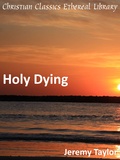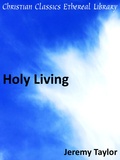Jeremy Taylor
English bishop and theological and devotional writer
Biography
After completing his studies at Cambridge and taking (1633) holy orders, Taylor was nominated by Archbishop Laud in 1635 to a fellowship at All Souls College, Oxford. He became chaplain to Laud and rector of Uppingham, Rutlandshire in 1638, but as a chaplain-in-ordinary to Charles I, Taylor left his country church in 1642 to serve the king at the outbreak of the civil war. After a royalist defeat in 1645 before Cardigan Castle, in Wales, he was briefly imprisoned.
In 1645 he became principal of a school in Caermarthenshire, Wales, and served as private chaplain to the 2d earl of Carbery, at whose home, Golden Grove, Taylor wrote some of his most distinguished works. His period of greatest literary production was between 1646 and 1660. The Liberty of Prophesying (1647) was a noteworthy call for toleration. His Great Exemplar?…?the Life and Death of Jesus Christ (1649) was followed by other books of devotion:Holy Living (1650), Holy Dying (1651), The Golden Grove (1655), and The Worthy Communicant (1660). His learned Ductor Dubitantium or, The Rule of Conscience (1660) was dedicated to Charles II.
After the Restoration, in 1660, he was given the bishopric of Down and Connor, in Ireland, and appointed vice-chancellor of Trinity College, Dublin. At Dromore, which was added to his see, Taylor built the church in which he is buried. His tenure from 1660 to 1667 as bishop was a period of turbulent dispute with the Presbyterian ministers who refused to acknowledge episcopal jurisdiction.
Taylor has been called the Shakespeare and the Spenser of the pulpit. A number of his sermons were published; many critics consider that in them his mastery of fine metaphor and his poetic imagination are best revealed. Taylor's Whole Works (ed. with an admirable biography by Reginald Heber, 15 vol., 1822) was edited and revised by C. P. Eden (10 vol., 1847-52). The Golden Grove, with selected passages from Taylor's sermons and writings, was edited in 1930 by Logan Pearsall Smith and contains a bibliography of Taylor's works by Robert Gathorne-Hardy.


